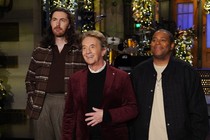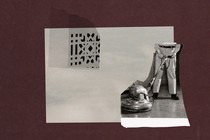Come on, take you to the Renaissance Western painting art
4 min read
The Creation of Adam by Michelangelo.From the 14th century to the 20th century.From the Renaissance to post-Impressionism.It has gone through eight artistic stages.Today we will take you to the art of Renaissance painting.Botticelli, Birth of Venus.Renaissance period (14th-16th century).A glorious era in the history of European art.Replacing religion with real life as the main subject of art.Realistic facsimile is the first order of business.
Pioneered techniques of expression based on science and investigation.
Knowledge of anatomy, geometry and perspective principles.For artistic creation.He has made great contributions to the improvement of his artistic skills.
There are roughly four major stages of the Renaissance.Reserve period: 13th-14th.Representative figure.Giotto, Jan van Eyck, Massaccio.Giotto.1266-1337.
Giotto is regarded as the pioneering master of Western painting. He first made a crucial step in painting by combining realistic style with light and shade method. In addition, it also combines beautiful narration with faithful observation, giving the painting an independent meaning. The humanistic thought and realistic expression created by him had a great influence on Renaissance art.Escape to Egypt.The Judas Kiss.Jan van Eyck.Jan Van Eyck 1385-1441.
One of the greatest painters of the early Netherland school, the founder of the Netherland Renaissance and a key figure in the formation of oil painting. He pulled sacred content into the real world and was known for his delicate realism and subtle light and shadow. He is known as the “father of oil painting” because of his unique contribution to the in-depth development of oil painting art skills.Arnolfini Betrothal.Our Lady of Lorraine.Masaccio.1401-1428.
Masaccio is a pioneer and milestone of the Renaissance. He was the first to use perspective to deal with three dimensions of space in the picture, and at the same time, he turned the ideal of Gothic art into real life. The unprecedented natural figure of the figure triggered the painting revolution, and his technique became the foundation of the development of Western European art.
“Donation”.Holy Trinity.Development period: 14th-15th.Representative figure: Botticelli.Botticelli.1445-1510.
Botticelli, an artist of the Florentine school of the early Renaissance in Europe, works of light and ethereal, with contemplative melancholy, revealing a mysterious longing for the god. He was one of the first painters to paint nude figures, contributing to the breaking of medieval traditions and religious prohibitions.
La Primavera (Spring) “Spring”.
The Birth of Venus.
Peak: From 15th to 16th.
Representative figure.
Da Vinci, Raphael and Michelangelo.
Da Vinci 1452-1519.
Da Vinci is not only the most outstanding representative of the whole Renaissance period, but also one of the most outstanding representative of the history of fine arts. He summed up the artistic achievements of his predecessors and made some achievements in painting composition, light and shade, perspective and color. The most unique artistic language is the use of “light and shade method” and “fade method” to create a sense of reality and three-dimensional image. The Mona Lisa is a great example of this technique.
Mona Lisa.
And the amazing thing about The Last Supper.
It is the master’s mastery of the character’s expression.
This is a historic initiative.
The Last Supper.
Raphael.
1483 — 1520.
Raphael was best at absorbing the strengths of others, and created the elegant, graceful and highly skilled artistic model of the high Renaissance, which was the unity of realistic beauty and ideal beauty, and was regarded as the model of classical art by later generations.
The School of Athens.
Sistine Madonna.
The High Mountains Show off.
Michelangelo.
1471-1564.
Michelangelo’s works are full of dramatic effect, majestic momentum and human tragedy. The plot is scattered, the characters are distinct and diverse, complex but not chaotic. It fully demonstrates the beauty of human nature and inner beauty, praises the strength and greatness of human beings, and is full of passionate humanistic spirit.
Creating Adam.
Final Period (16th-17th).
Representative figure.
Giorgione, Titian, Tintoretto, Velasquez.
Giorgione.
1477-1510.
Giorgione is full of artistic sense and imagination, full of poetic melancholy, is the representative of Venice painting. He was the first to use the shading and shading method. Works of novel composition, soft shape, rich layers, great influence on later generations.
The Tempest.
Sleeping Venus.
Titian.
1490-1576.
Titian’s works are full of vitality and ideal, with classical colors, bold colors, rich, bright, subtle and accurate; The brushwork is passionate and free-flowing; The picture is loud and harmonious, brimming with vitality of life and powerful, luxurious beauty. It was a prelude to Baroque aesthetics.
Dionysus and Ariadne.
Diana and Adiona.
Venus of Ubino.
Tintoretto.
1518-1594.
Tintoretto’s work, combining the colors of Titian with Michelangelo’s sketches, is both traditional and innovative. Dynamic image warm, rich and fantastic colors, created a unique new art, in Venice school of painting unique.
The Last Supper.
The Miracle of St. Mark.
Velasquez.
1599-1660.
Spain’s greatest painter of the late Renaissance and influential on Impressionism. Velazquez opposed the veneer of appearance and advocated the reality of the world. Works with distinctive features, natural brushwork, colorful, complex performance skills to reproduce the beauty and harmony of human nature, unprecedented.Las Meninas.The Spinner.Pope Innocent X.






